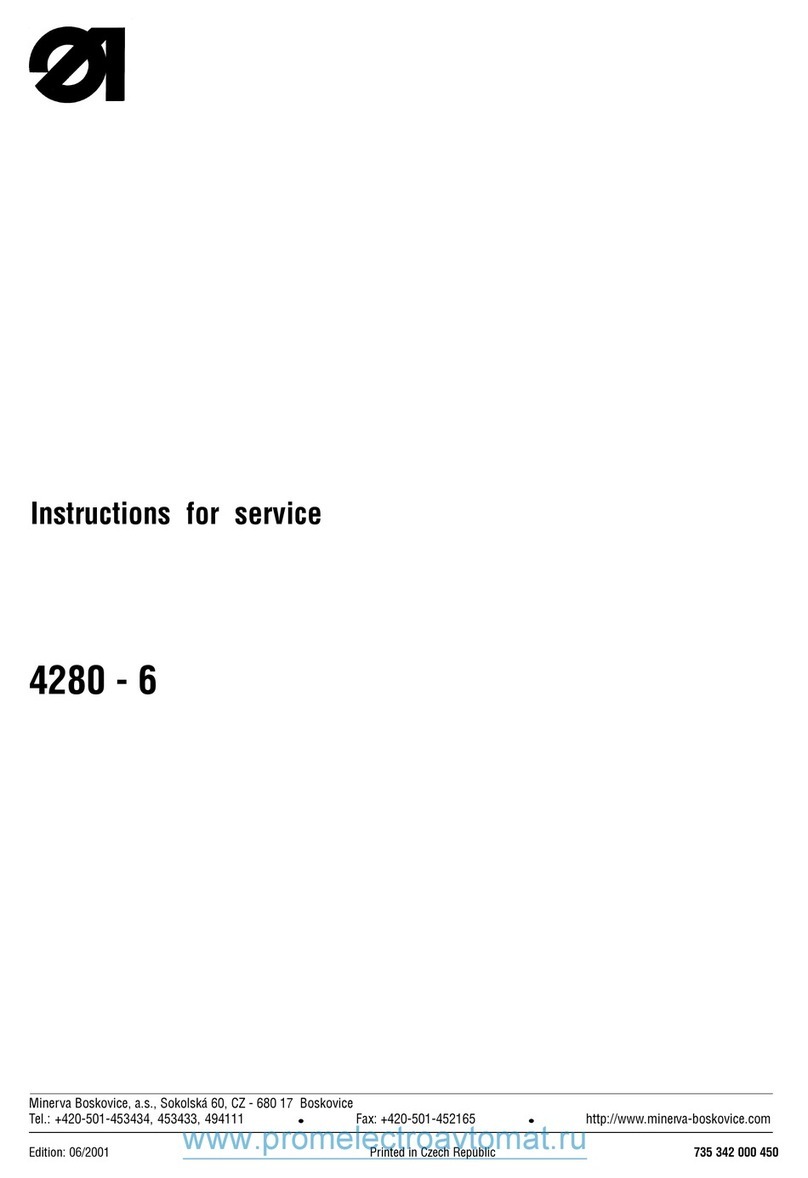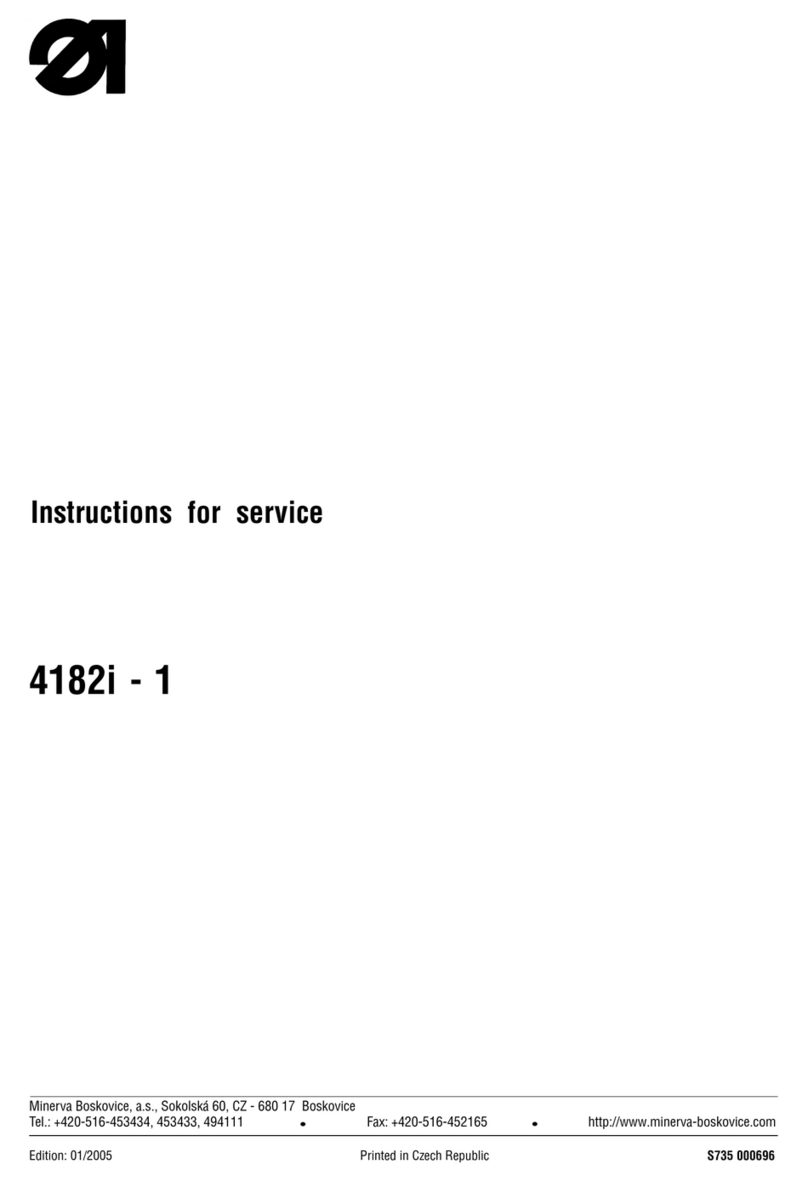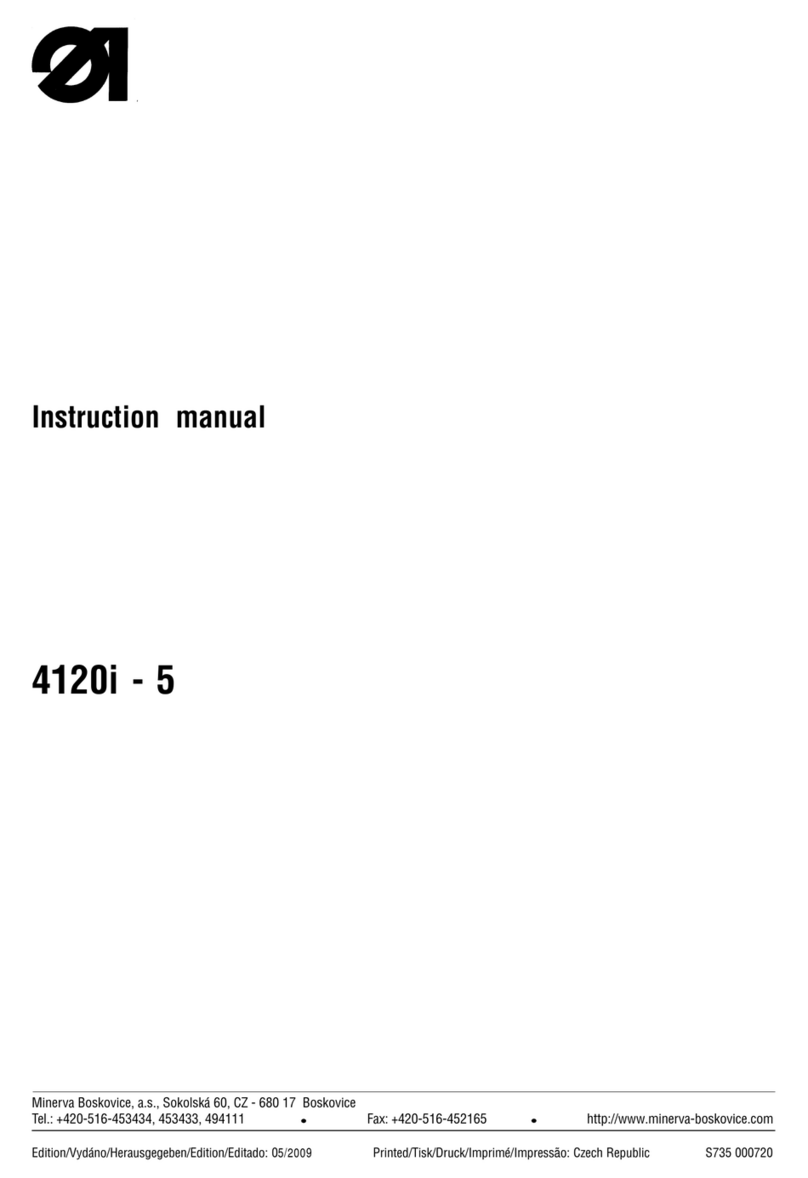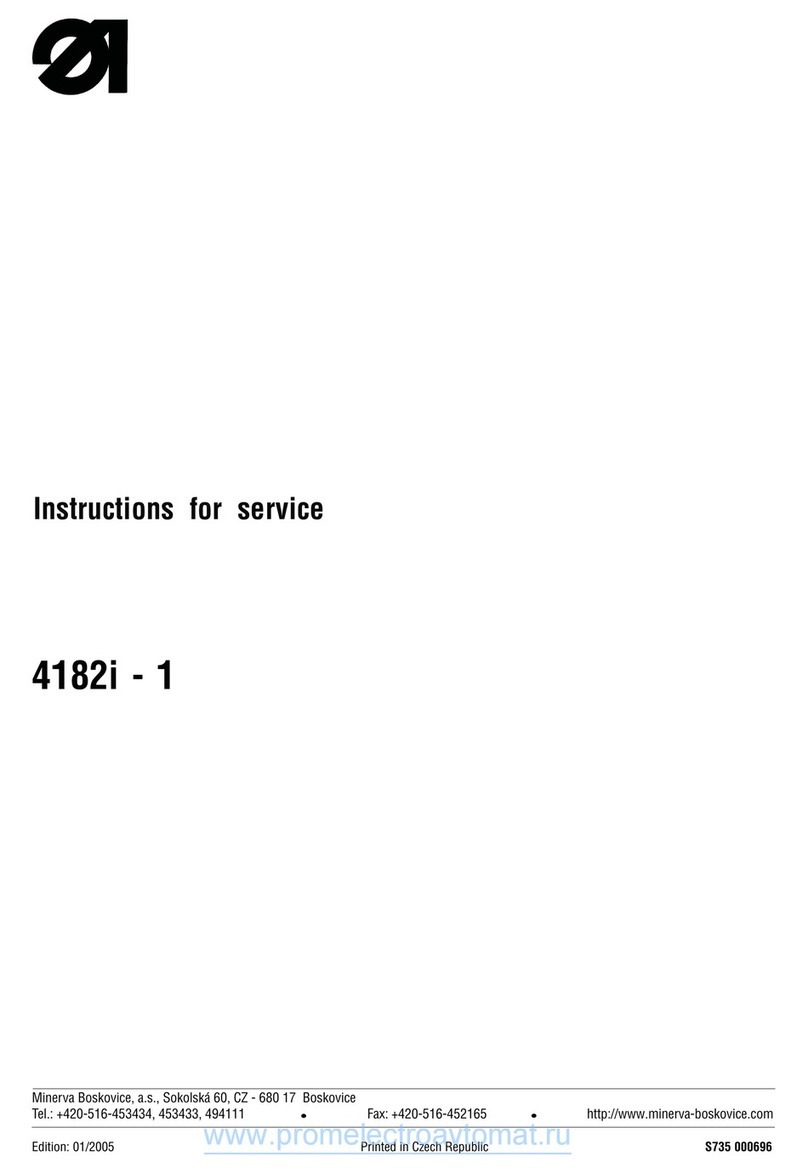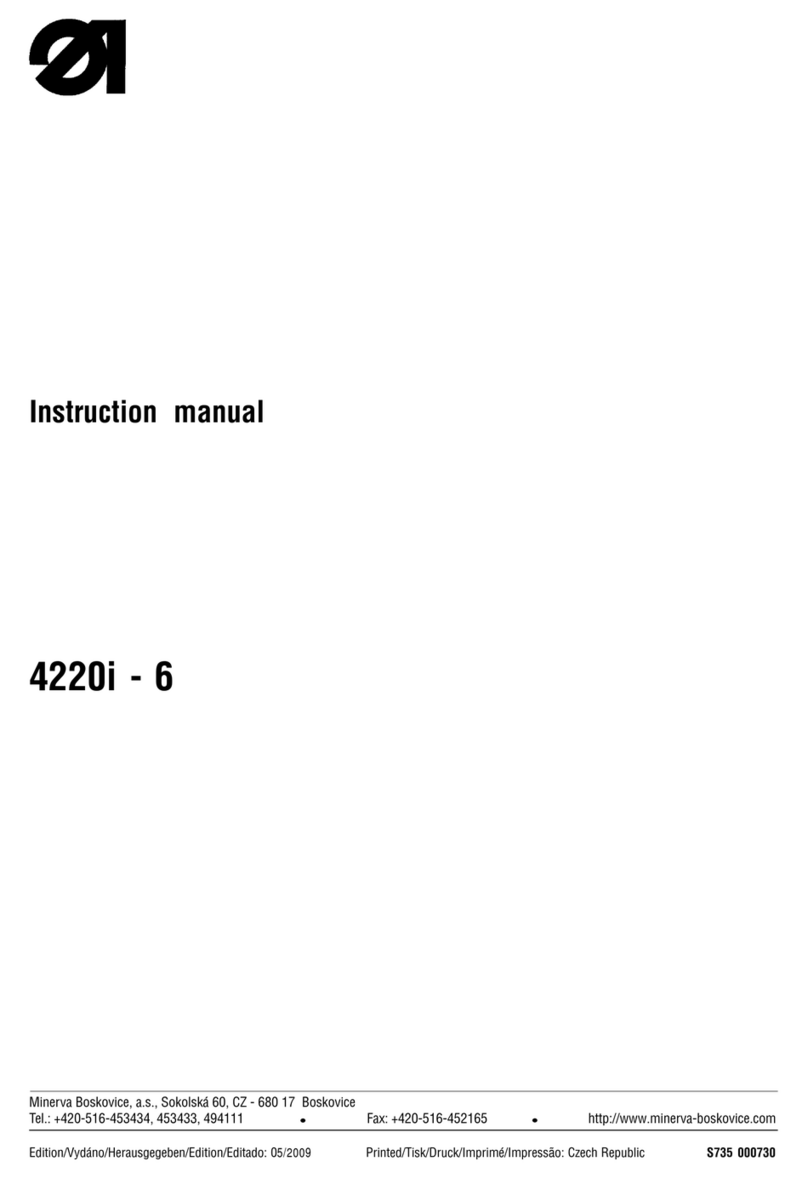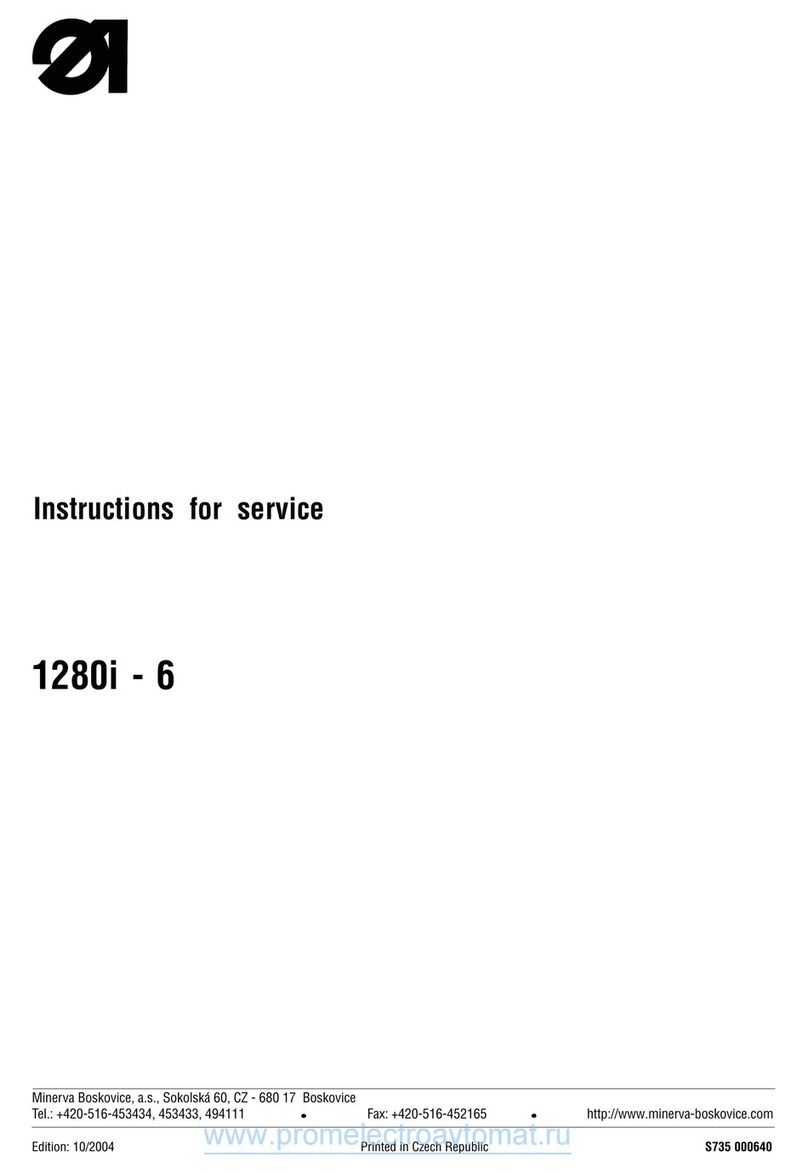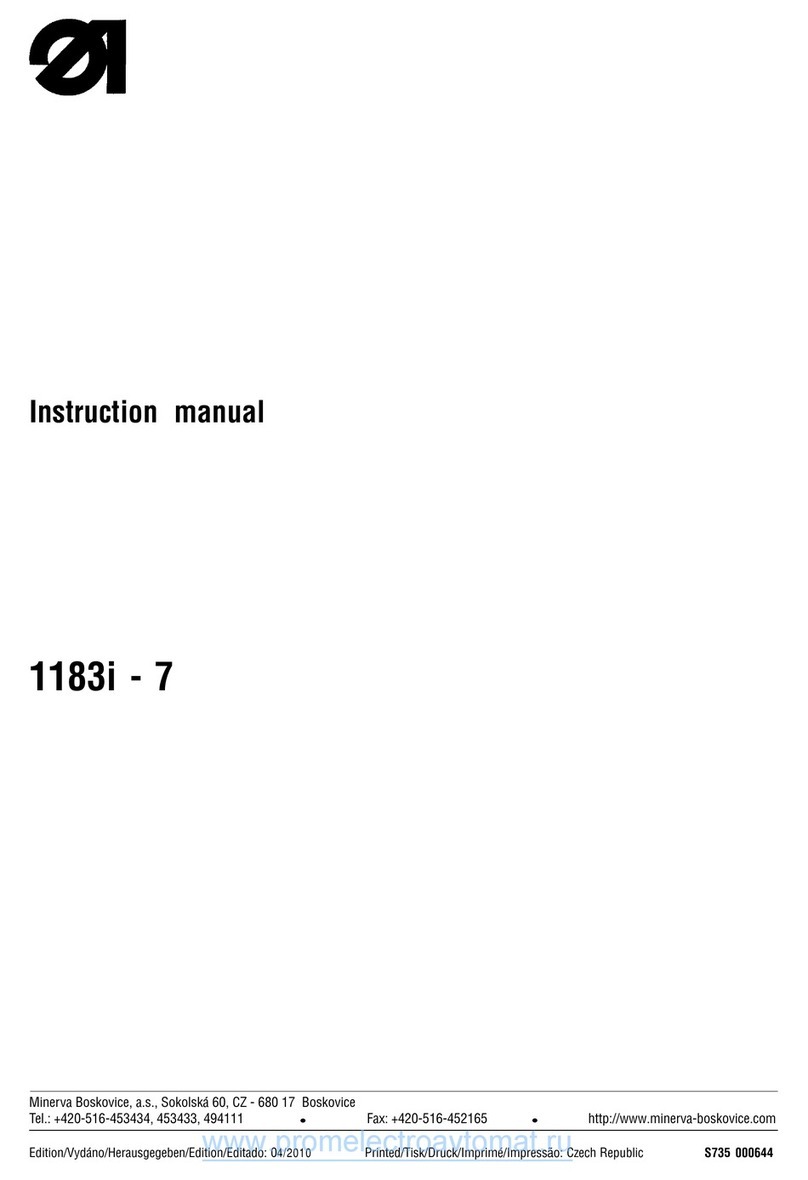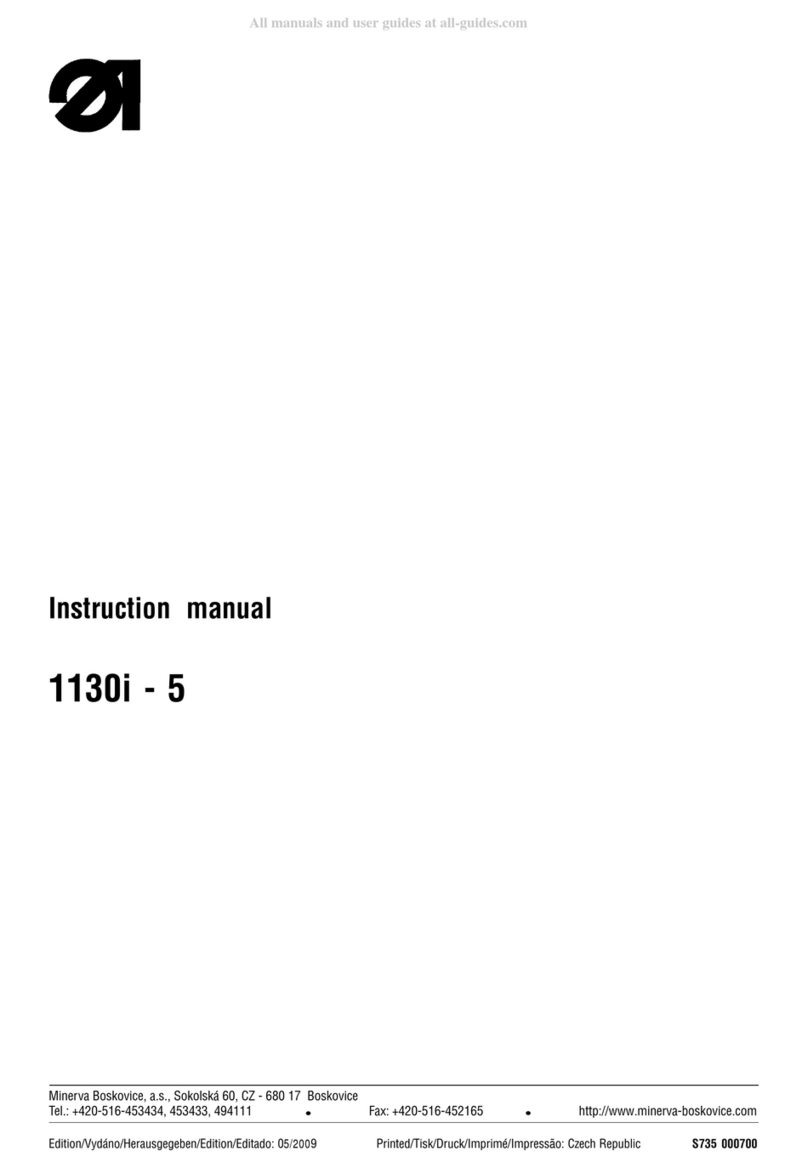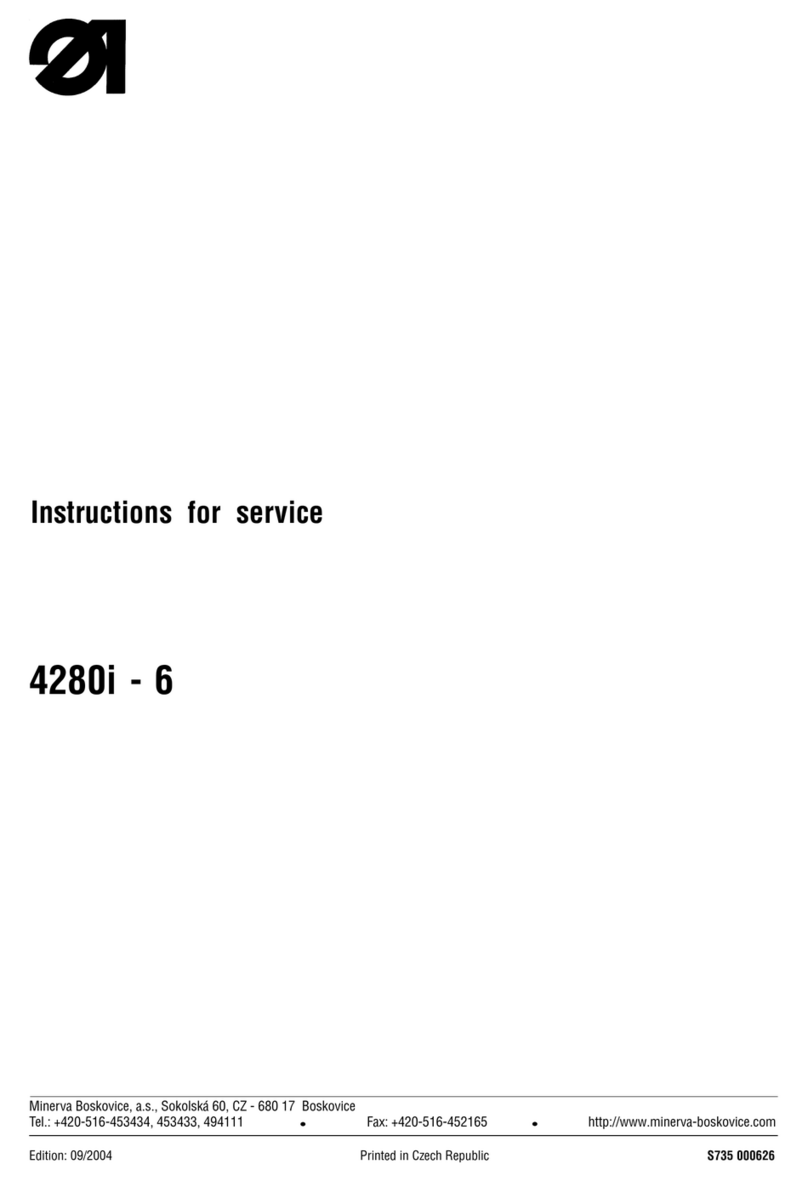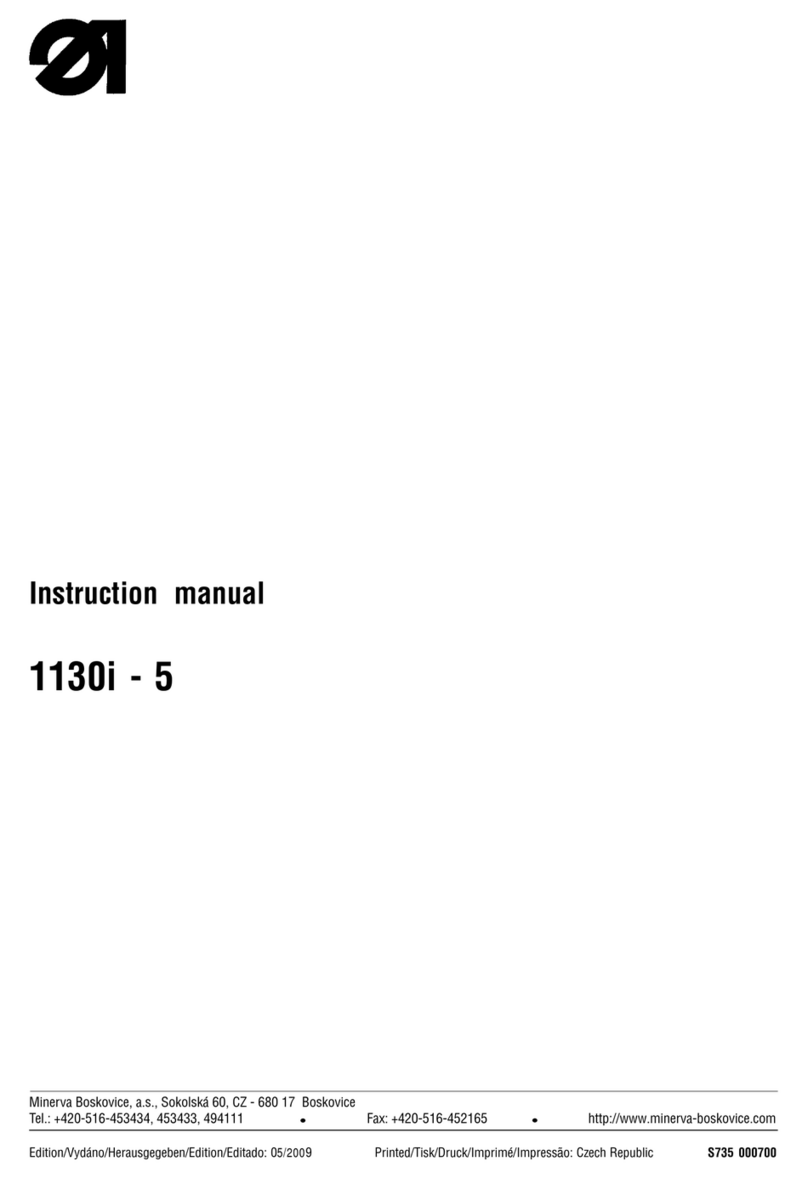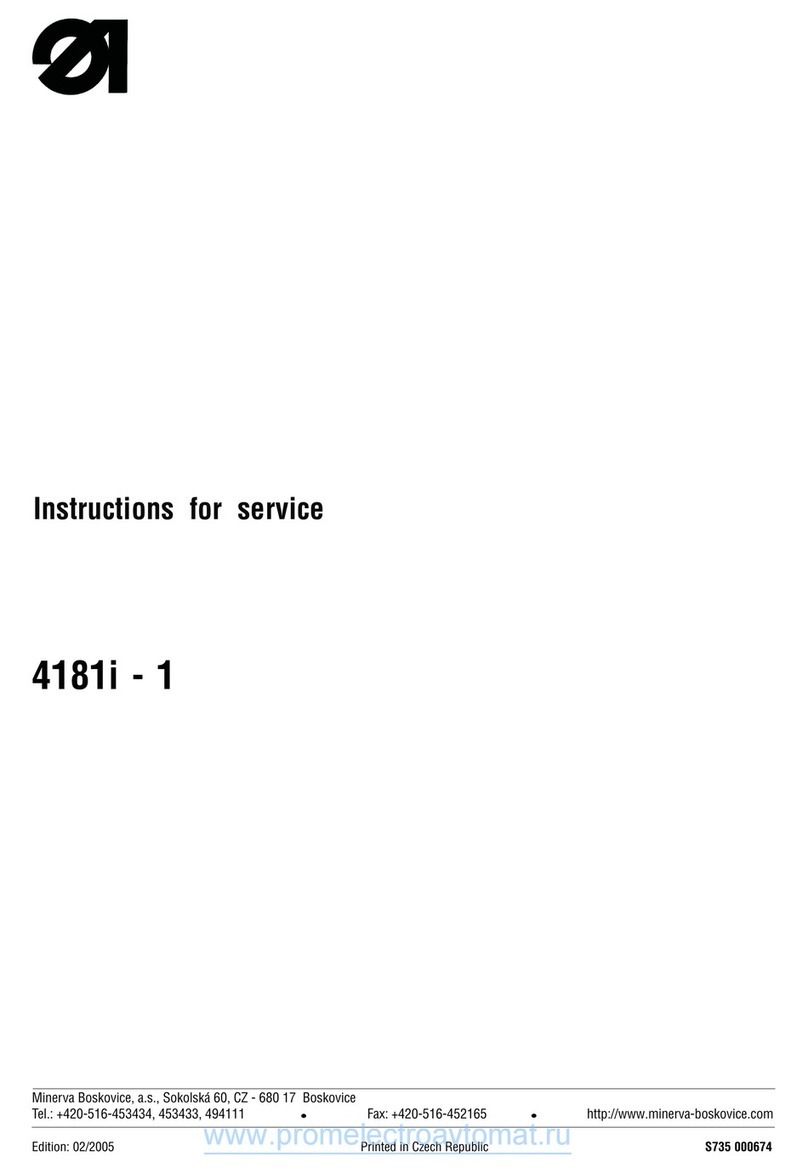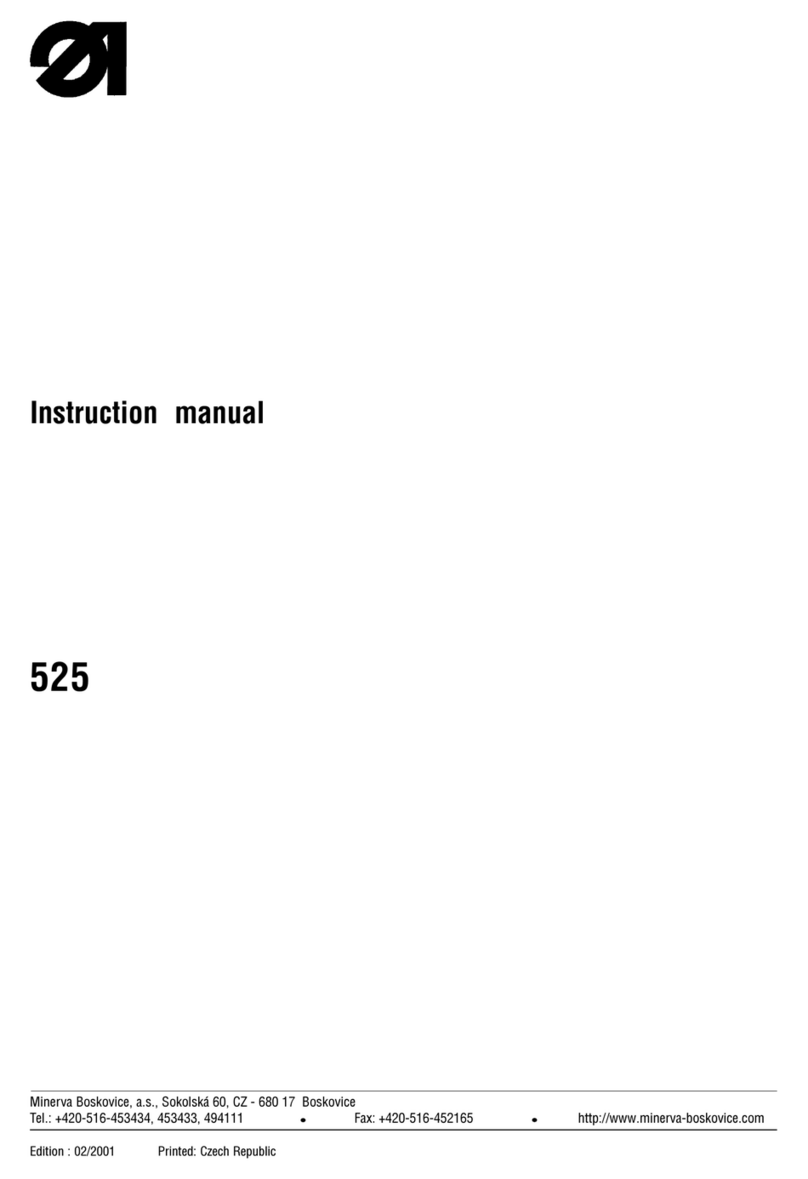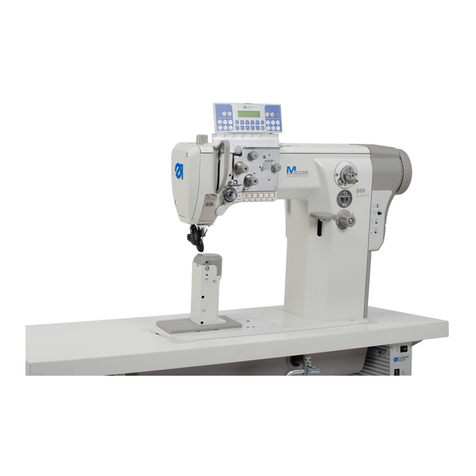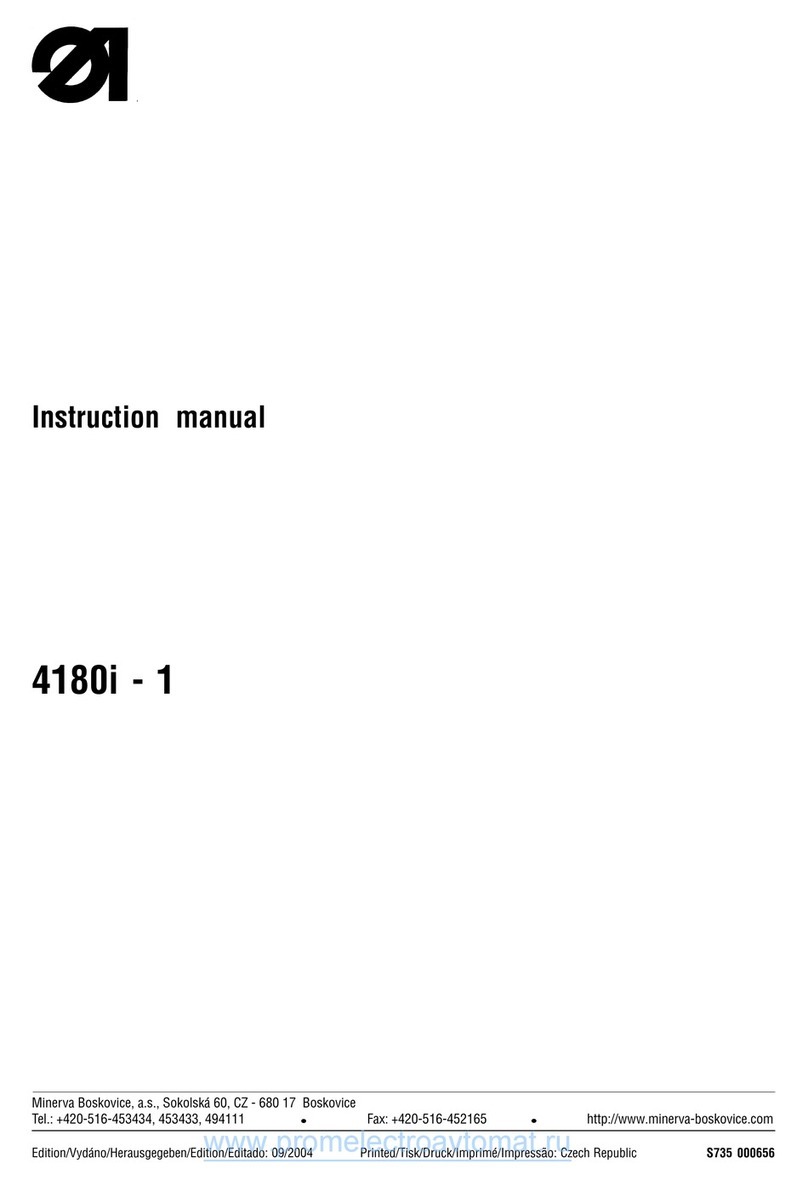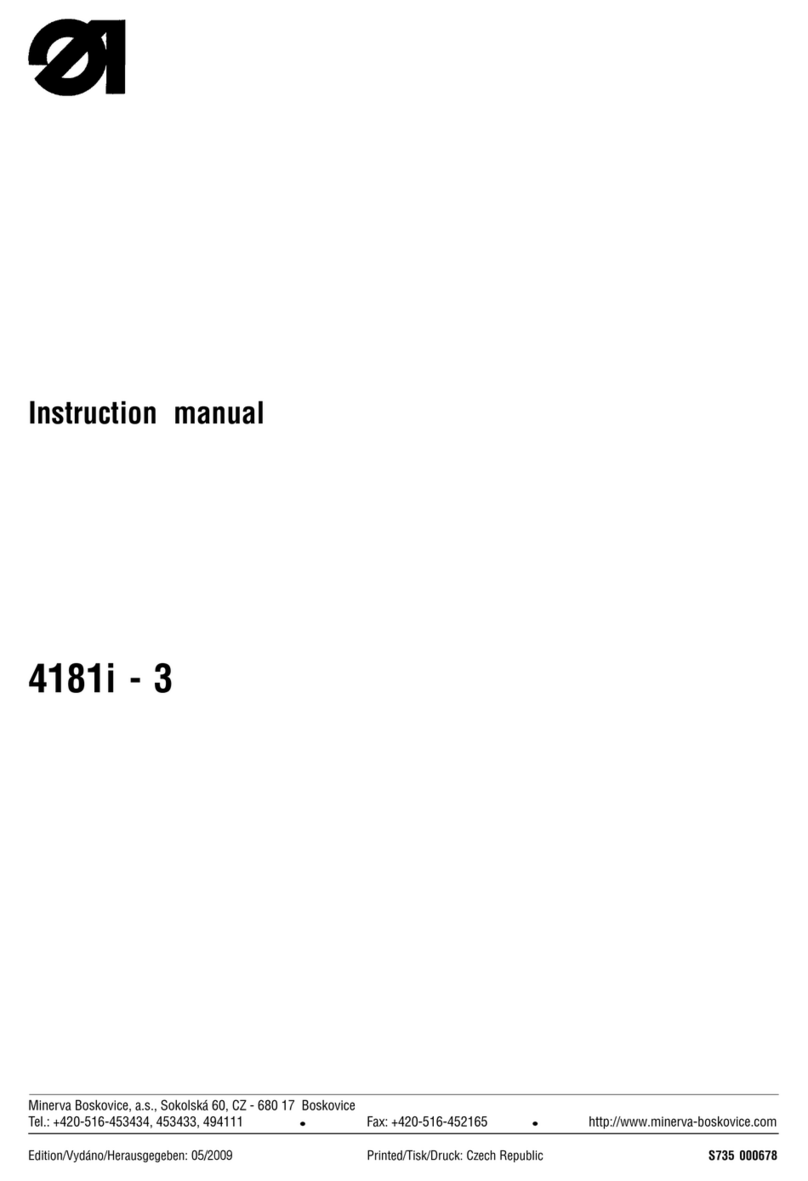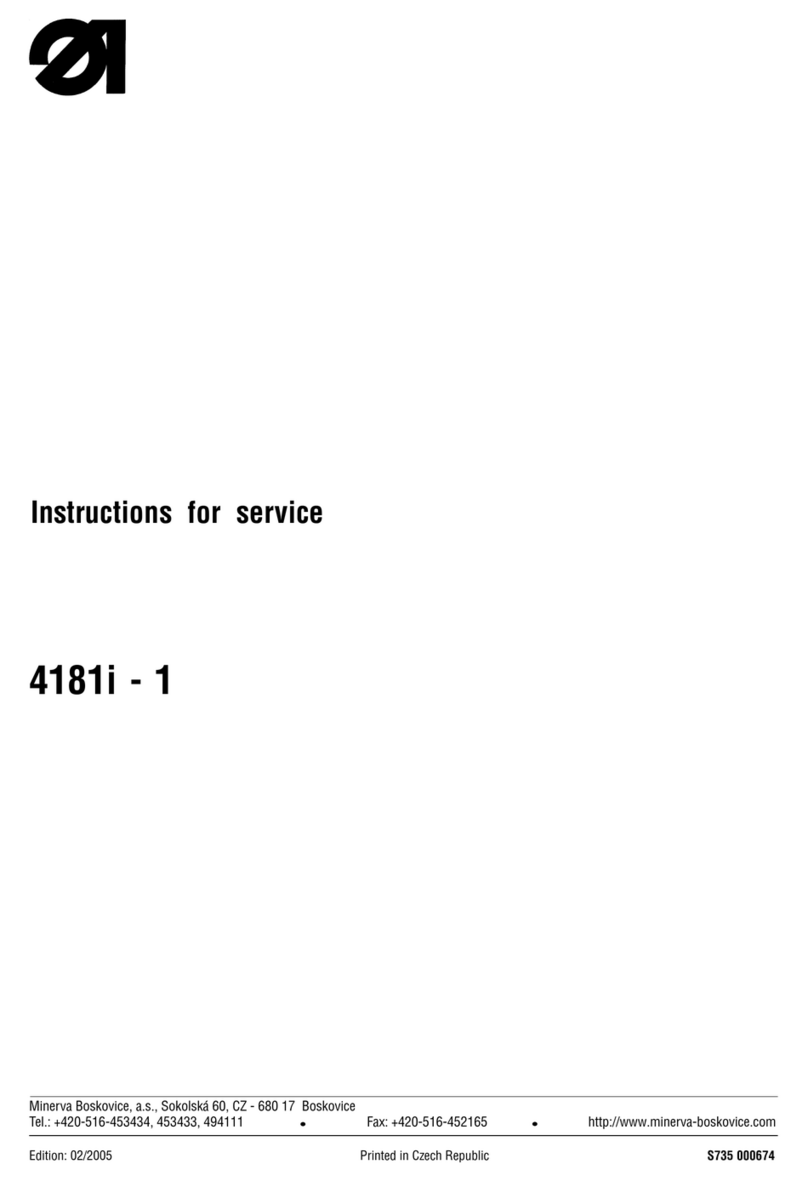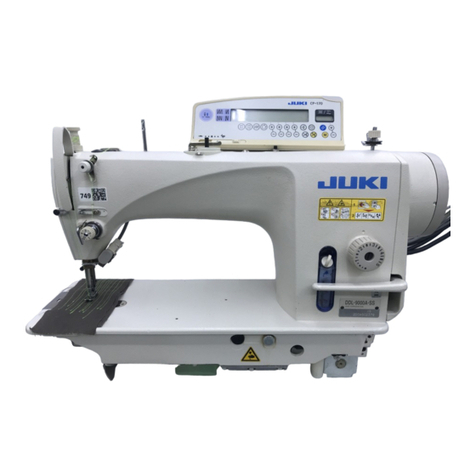
1
Part A - Instruction manual
1. Proper use of the machine
The machine is used in the shoemaking industry for sewing shoe uppers, for sewing on linings with simultaneous lining edge
trimming under the angle of 20° in the manufacture of shoe uppers. In addition to this, the machine serves for assembling
individual shoe parts, as well as for decorative stitching without edge trimming. The machine is suitable for other similar
operations in the fancy goods industry. The machine is able to sewing upper leathers, natural or synthetic leather, eventually in
combination with textile materials. Trimming is always to be done with a sharp knife. The knife is driven by a self-contained motor
and its rear edge is situated 6 mm behind the needle axis. It ensures a good quality trimming of the lining material both in inner
and outer curves. When trimming soft materials, the operator should maintain them, in pulling the trimmed lining behind the
needle, in a stretched condition to make the trimming operation easier.
The machine sews using a double-thread lock stitch. A combined feeding ensures a uniform feeding of all layers to be sewn
together. The machine has got a standard outfit with the 134 KKL needles suitable for sewing leather. For sewing textile materials,
the needle system 134 is being used. In general, only dry material may be sewn, which is not thicker than 6 mm after having been
compressed by the roller presser foot. The material should not contain any hard objects, for the machine is not provided with any
eye protector.
For sewing, textile threads up to the dimension 500 dtex x 1 x 3 (label No 20) are to be used, namely synthetic, cotton or core
spun threads. When needing other special threads, one must take into account the respective risks and proceed to the necessary
safety measures. When sewing very hard or consistent materials or when sewing with edge trimming, the sewing speed must be
considerably reduced below the values given in the technical parameters of the machine.
These special machines may be installed and operated only in dry rooms kept in orderly conditions. When operating them in
rooms which do not meet such conditions, there must be done some additional measures according to the EN 60204-31
standard. In our position of the manufacturers of industrial sewing machines, we start from the assumption that our products are
operated by an at least initiated operator, so that all usual operating activities and their eventual riks can be supposed to be
known.
Machine noisiness
Machine noisiness has been measured in accordance with the standards ISO 3746, ISO 11204 at maximum speed.
Laeq = equivalent machine noise of the self-standing machine on the working place, converted to % machine employment (dB)
- stated in the table
2. Description of the machine
This is a one-needle post-bed sewing machine with a standard vertical hook situated to the right from the needle. The feeding is
of a two-step type with a driven top roller presser foot and with a circular bottom feed combined with a needle feed during the first
step of the workpiece feeding. The main mechanisms are mounted on antifriction bearings, swing shafts and pins are slidingly
mounted. Feeding is derived from the mechanism of changing stitch length through a friction clutch on the bottom feeding shaft.
From here the circular feeder is driven by means of a roller chain. The drive of the roller presser foot is derived from the bottom
feeding shaft through an indented belt on the top feeding shaft through abevel gearing on an articulated vertical shaft. The
needle feeding is derived from the same mechanism as the circular feeding. The stitch length is set using a knob on the web of
the machine arm.
The machine is provided with a thread trimming device, with an electromagnetic roller presser foot lifting, with an electromagnetic
backward stitching. This backward stitching is controlled by a hand lever or by a microswitch in the event of having provided the
machine with an electromagnetic backward stitching. The machine has got a sewing set mounted with changeable needle plate
inserts according to the needle number and according to the distance of trimming from the needle. It i possible to choose the
roller presser foot of 25, 35 or 45 mm. The standard vertical hook has got its own forced bobbin case opening. The hook is
protected by a protective coupling against overload with an adjustable switch-off moment. There is a central pressureless wick
lubricating system. The hook is excluded from this system, it is lubricated separately with its own lubricating regulation. Each
machine has got a built-in hook thread friction winder mounted. The machine can be provided with a halogen lamp lighting,
eventually with further possible outfit. When the machine has no electromagnetic roller presser foot lifting, this lifting is controlled
by the knee lever or, in case of deliveries for the Czech Republic, by the left pedal.
The frame is fitted with a wedge. In accordance with the roller presser foot lifting outfit, the frame is fitted with one or two pedals.
For the edge trimming operation, the machine is provided with an oblique top trimming device. The knife is driven by a leverage
from a separate motor, which is situated on the machine arm. The knife is started by a lever and is automatically shifted into its
working position. With machines provided with the EFKA stop motor, the motor of the trimming device is being switched on only
at the beginning of the sewing operation and it is switched off with an adjustable delay after having ended the sewing operation.
By returning the lever back, the lever movement is stopped and the knife moves upwards, outside from the sewn workpiece.
Together with the machine there is supplied a tiltable material guide. Putting this guide in its working position is mechanically
selectable either separately from the trimming operation or together with the trimming.
Type of the Noisiness % machine
machine dB employment
4182i-XXX-100 82 20
4182i-XXX-200 79 20
4182i-XXX-300 73 20
